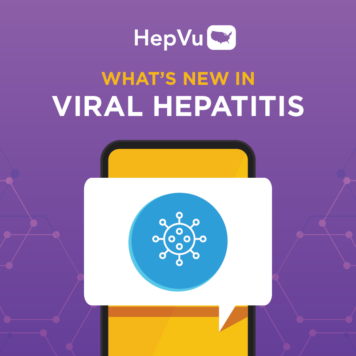Selected and summarized by Ronald O. Valdiserri, MD, MPH, Professor, Department of Epidemiology, Rollins School of Public Health, Emory University, and Co-Chair of HepVu.
Dr. Valdiserri reviews significant articles on prevention, public health, and policy advances in viral hepatitis. This month, he highlights an article entitled, “Accessible Hepatitis C Care for People Who Inject Drugs: A Randomized Clinical Trial.” Eckhardt B, Mateu-Gelabert P, Aponte-Melendez Y, Fong C, Kapadia S, Smith M, Edlin B, Marks K. JAMA Internal Medicine, May 2022; vol 182(5): 494-502.
What question(s) does this study address?
In the CDC’s most recently published surveillance report, rates of acute Hepatitis C infection increased again in 2019. Among the cases with relevant information available, two-thirds (67%) reported a risk factor of injection drug use (1). Providing accessible prevention and care services to people who inject drugs (PWID), including curative treatment for Hepatitis C, is essential to reach national viral hepatitis elimination goals (2). Despite clinical guidelines that call for prompt treatment among active or recent drug users infected with Hepatitis C (3), provider, patient, and system barriers often interfere with the delivery of these services (4). Eckhardt and his colleagues developed a low threshold Hepatitis C treatment program, co-located at a destigmatized site (a syringe service program), and compared outcomes for PWID who received Hepatitis C treatment in this novel program to PWID who received the usual care for Hepatitis C (i.e., facilitated referral via a patient navigator to local clinicians for their Hepatitis C treatment). Unlike usual care, the low threshold intervention encouraged drop-in visits and flexible scheduling with proactive outreach for missed visits. Participants in both arms were compensated equally for quarterly research visits, but they were NOT compensated for engaging in clinical care or receiving Hepatitis C treatment.
What are the major findings of this report/article?
- Out of 572 participants screened, 165 were eventually eligible to participate and were randomly assigned as follows: 82 to receive the intervention of low-threshold, accessible care and 83 to receive the usual care (patient navigator facilitates referral to local Hepatitis C treatment provider).
- The percentage of participants achieving cure (no Hepatitis C virus detectable in blood) within one year of enrollment was significantly higher in the accessible care arm (67.1%) compared to those who had been enrolled in the usual care arm (22.9%).
- The difference in outcomes was due to the fact that the percentage of participants who advanced along each stage of the Hepatitis C care cascade was higher at each step for the intervention (low threshold program) group compared to the usual care group. For example, only 26.5% of PWID in the usual care group initiated Hepatitis C treatment compared to 78.0% in the intervention (low threshold) group.
What are the implications for the prevention and control of viral hepatitis?
- Providing low-threshold, destigmatized, accessible Hepatitis C treatment to PWID can result in substantial rates of cure, thus promoting efforts to eliminate Hepatitis C in this population.
- Participants were recruited from various sites around New York City and the investigators note that most of the patients in both arms of their study were insured or eligible for insurance; no participants had their insurance company deny Hepatitis C treatment. This is not the case everywhere in the United States. A number of U.S. states impose screening, counseling, and/or sobriety restrictions prior to allowing PWID covered by Medicaid to receive Hepatitis C curative treatment (5), a formidable barrier to treatment.
- This destigmatized, low threshold approach to providing Hepatitis C care can serve as a model for others to engage, treat, and cure Hepatitis C infection among PWID.


